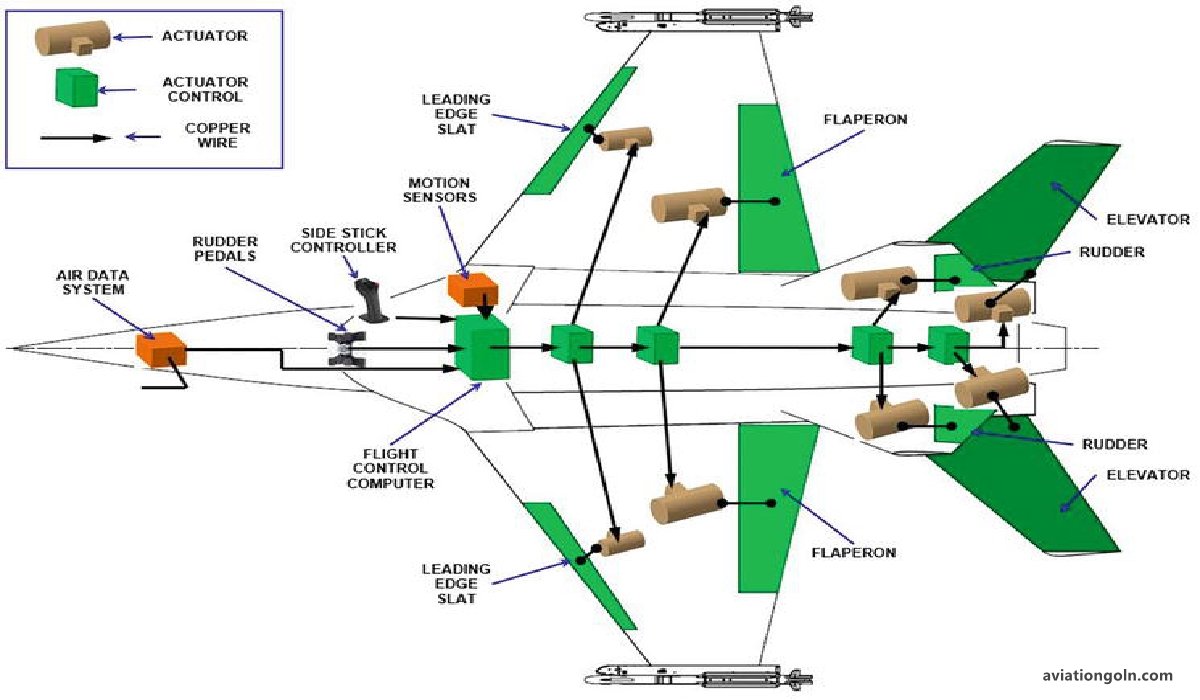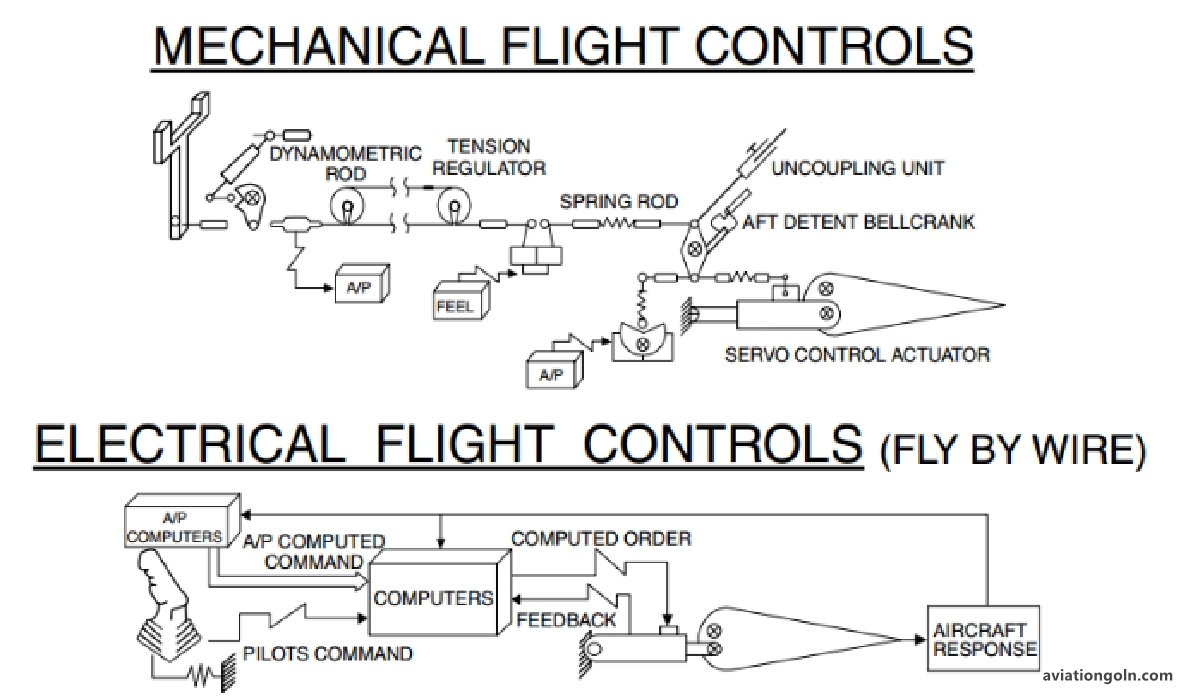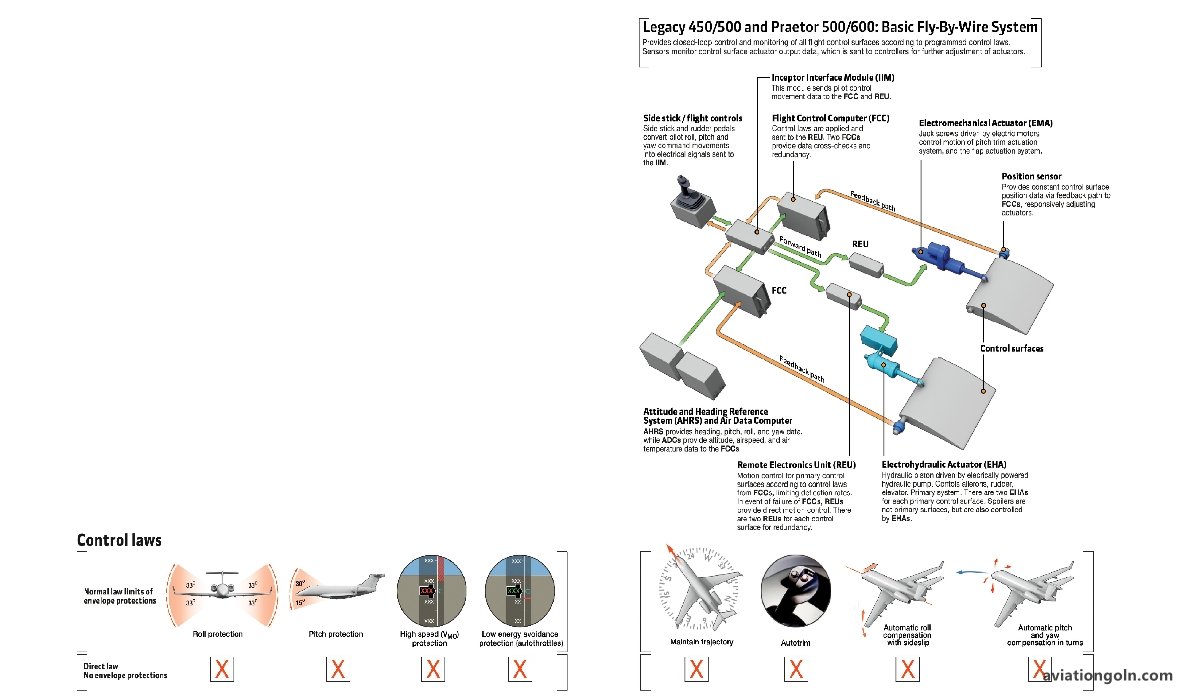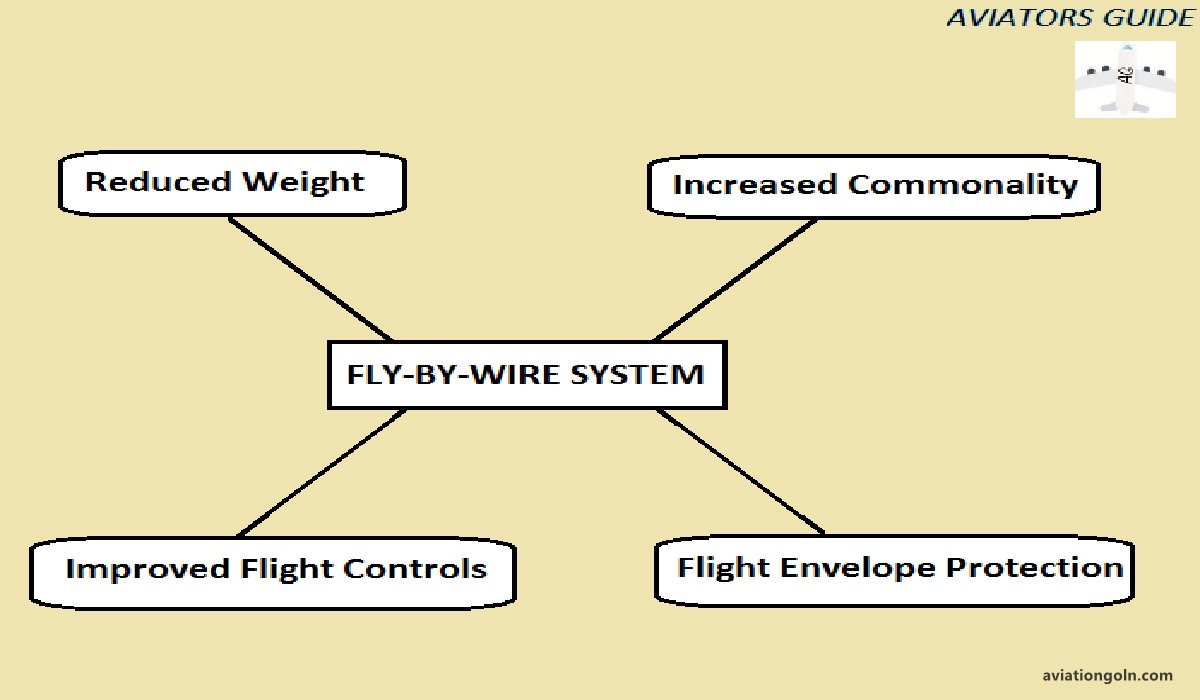Fly-by-Wire Control Systems: The evolution of aviation technology has witnessed the transition from conventional mechanical control systems to highly sophisticated electronic interfaces. One of the most significant advancements in modern aviation is the development of Fly-by-Wire (FBW) control systems. This article delves into the world of FBW, exploring its origins, functionality, advantages, and its impact on the future of flight.
Fly-by-Wire Control Systems
1. Origins of Fly-by-Wire
The term “fly-by-wire” is derived from the system’s reliance on electronic signals, or “wires”, to convey pilot inputs to the aircraft’s control surfaces, rather than using manual pulleys, hydraulic systems, or mechanical linkages.
Historical Background: The concept of FBW started during the 1950s when engineers began to realize the limitations of mechanical systems in high-speed and advanced aircraft. The first practical applications of FBW were seen in some experimental aircraft and space programs in the 1960s and 1970s.

2. Basic Functionality
In a fly-by-wire system, the pilot’s control inputs are translated into electronic signals, processed by flight control computers, and then sent to actuators that move the aircraft’s control surfaces. Here’s a step-by-step breakdown:
- Control Input: The pilot provides input through the control stick or yoke.
- Signal Conversion: This input is converted into electronic signals.
- Processing: Flight control computers process these signals, considering various aircraft parameters and conditions.
- Actuation: The processed signals are sent to electro-hydraulic actuators which move the control surfaces, such as ailerons, elevators, and rudders.

3. Components of FBW
- Sensors: These detect control column movements and translate them into electronic signals.
- Flight Control Computers (FCC): The heart of the FBW system, the FCC processes the signals, ensuring the aircraft responds correctly to pilot inputs.

- Actuators: These are the devices that move the control surfaces based on electronic commands from the FCC.
- Feedback Systems: These provide data to the FCC about the aircraft’s position, speed, and other relevant parameters.

4. Advantages of Fly-by-Wire Systems
Safety: One of the paramount benefits of FBW is its contribution to safety. The system can automatically correct dangerous flight conditions, prevent pilots from making potentially hazardous control inputs, and even compensate for damaged control surfaces in some cases.
Weight Reduction: Eliminating heavy mechanical linkages and hydraulic systems results in a considerable weight reduction, which in turn contributes to fuel savings.
Precision and Performance: FBW systems offer more accurate and faster responses to pilot inputs compared to conventional systems, resulting in smoother flight and better overall performance.
Flexibility: Aircraft designers have more freedom in terms of aircraft layout and design because they’re not restricted by the need to accommodate mechanical control systems.

5. Flight Envelopes and Limitations
FBW systems often incorporate flight envelope protection. This means that the system prevents the aircraft from entering potentially dangerous flight conditions, such as stalls or excessive g-loads.

6. Types of FBW Systems
- Direct FBW: This system provides a direct link between the pilot’s input and the control surfaces but through electronic means.
- Augmented FBW: In this system, the flight control computer modifies the pilot’s inputs to optimize flight performance and enhance safety.

7. Challenges and Criticisms
While FBW offers numerous advantages, it’s not without its challenges:
- Reliability Concerns: Any failure in the electronic systems could lead to a loss of control. However, modern FBW systems are designed with multiple redundancies to minimize this risk.
- Pilot Skills: Some critics argue that the automation provided by FBW might degrade a pilot’s manual flying skills.
- Complexity: Maintenance and troubleshooting of FBW systems require specialized knowledge and can be more challenging than conventional systems.

8. The Future of FBW
Integration with Artificial Intelligence (AI): As AI technology advances, it’s likely that FBW systems will incorporate more AI-driven functionalities, enhancing safety and performance.
Complete Autonomy: While we’re not there yet, it’s conceivable that future aircraft might be fully autonomous, with FBW systems acting without human intervention.

Fly-by-wire systems have revolutionized the world of aviation, offering unparalleled safety and performance benefits. As with any technological advancement, it’s accompanied by challenges, but the continuous evolution of FBW promises an exciting future for the aviation industry.
